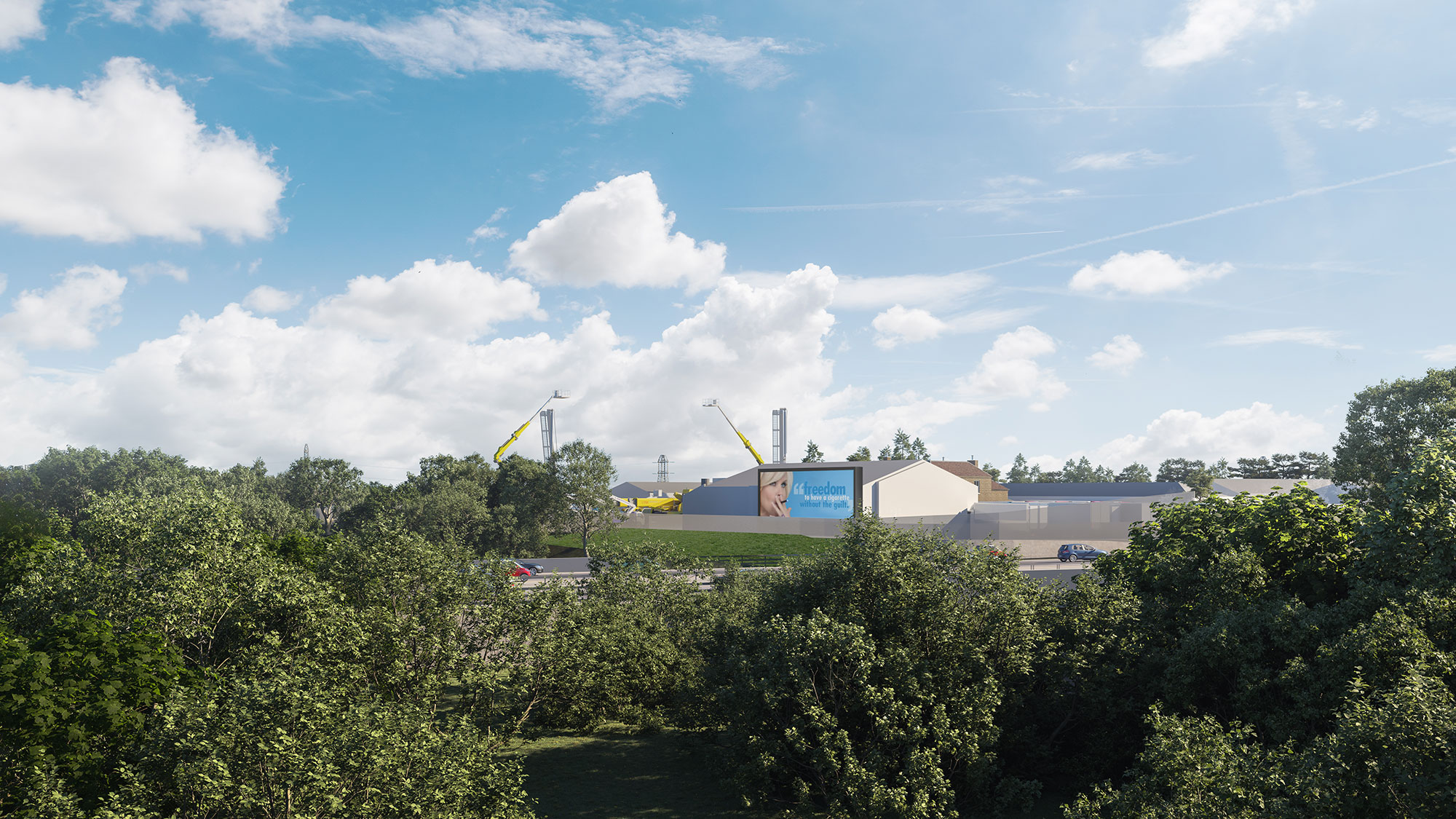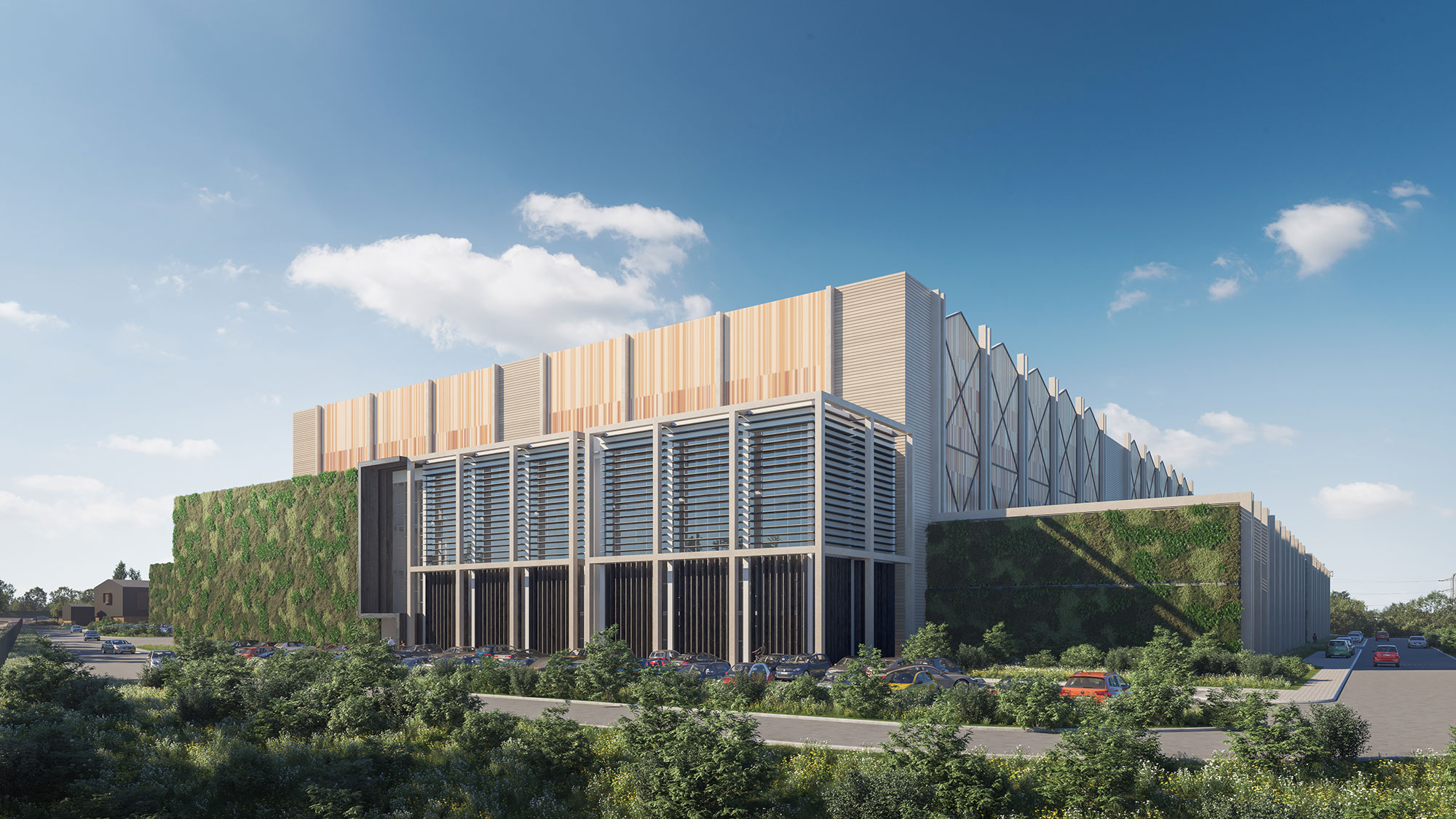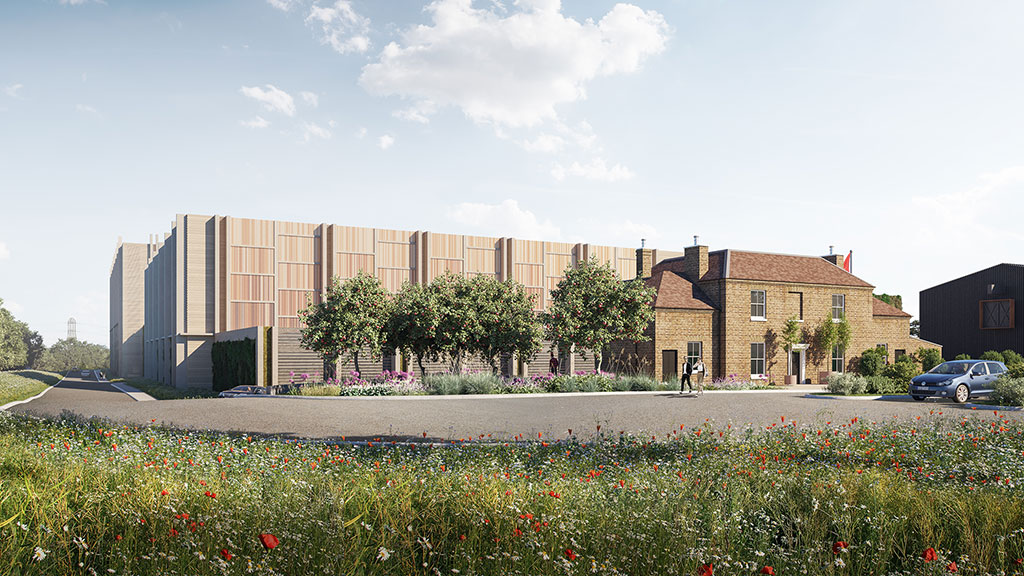Data Centres and the Forgotten Landscapes of Digital Infrastructure
May 24, 2023 | By Yukako Takanashi and Kenneth Allan
“The cloud” has had a major impact on the way digital information is organised throughout the world. Centralised file storage and high-speed internet connections have enabled a vast network of sites designed to house data with anytime access for millions of users at a time. As amazing and efficient as this is, the physical impact on the built or natural environment can often be overlooked or understated.
The Rapid Growth and Impact of Data Centres
The shift from having an IT room in an office environment to data centre infrastructure has been swift, leading to a boom in data centre project delivery across the world. The public cloud computing market has been forecast to increase from $258 billion to $323 billion in the U.S. alone by 2026. Achieving such significant expansion requires either vertical facilities in urban areas or large rural sites to accommodate land-hungry, warehouse-style layouts.
As a result of global climate change awareness and the huge expansion projections, questions regarding the efficient and appropriate use of land are inevitable. The negative impact of data centres on the climate is huge, with studies suggesting that they are accountable for 2-3% of global carbon emissions. To put this in perspective, global emissions from the aviation industry stand at approximately 2.4%, as noted in a 2023 study by 8billiontrees.com.
Closer to home, in the U.K. there are 277 co-location data centers from 70 areas. Data centre building footprints in a rural context tend to comprise around 30-50% of site area; 50- 70% is left for external uses, such as access, circulation, greening, maintenance zones, landscape buffers, and stormwater ponds.
In a sense, critical facilities can be compared to military bases or airports; these facilities have vast land areas, big sheds, hard perimeter boundaries, and stringent security requirements, resulting in large areas of open grassland that offer little landscape purpose or ecological value. Internal to the site boundary, a typical landscape design response is limited to ensuring sightlines across each site are maintained for security reasons and that they have efficient functional layouts requiring minimal maintenance. This approach only really serves the primary purpose of the facility. However, the design ethos for data centres and other large, secure compounds is on the verge of significant change.

Existing condition of the site for the proposed data centre in Court Lane, London. Client: Corscale, Patrinely, and Affinius Capital.
The Need for Regenerative Design Principles in Data Centre Planning
Every space, on any project site, has an inherent value. Whether that value be economic or providing positive impact to the natural world, designers and developers have a moral obligation to prepare proposals that give back in a human depleted ecosystem. This is only achievable by incorporating regenerative design principles and utilising land more efficiently to unlock the contextual value of sites.
U.K. local authorities are adopting policies whereby new developments must demonstrate a biodiversity net gain of at least 10%, which creates an incentive to achieve this as a baseline target. Major tech giants, including Microsoft, Amazon, Google, and Meta, have been committing to renewable energy projects by integrating large scale solar and wind farms on data centre sites, often providing capacities exceeding several hundred megawatts. The use of renewable energy, along with advanced cooling systems and energy-efficient servers, all contribute to biodiversity net gain, often exceeding the U.K. authority’s target. Such efforts, however, are still not enough to offset the carbon emission that data centres are responsible for on a global scale.

Proposed data centre in Court Lane, London. Renderer: Renderek. Client: Corscale, Patrinely, and Affinius Capital.
Using the Power of Nature
The reality is that much greater impact can be achieved through a well-considered landscape design for data centre facilities. Such critical facilities need to stop existing only within their own firewall; instead, they should be ecosystem contributors. In terms of site planning, this could mean setting aside significant habitat areas and incorporating native woodland into the site security strategy, which, in turn, enables restoration of soil conditions. Ultimately, this would allow for designing for increased biodiversity whilst simultaneously establishing natural carbon sinks. The benefits of woodland planting are well established: boosting biodiversity, enhancement of local landscape quality, improving water and air quality, and alleviating flooding, to name a few. Gensler’s research has also explored ways to utilise waste heat from data centres using algae, providing an efficient method of carbon capture through bioreactive façade design.
Data center schemes are becoming more interesting and contextual. One such project currently undergoing a planning determination period is at Court Lane in West London, where an existing industrial site is in a complex set of circumstances. The site requires significant ground remediation while protecting the grade 2 listed building; it sits within the Green Belt and is bounded by the Biodiversity Opportunity Area (wasteland and Colne Brook). With only 4% of the existing site covered by any sort of green landscape, significant landscape value can be established when compared to the current condition. Proposals from the design team considered setting for the heritage asset, as well as uplifting green coverage across the site to nearly 30%, including native scrub, wildflower meadow, rain gardens, and hedgerows. This results in a biodiversity net gain reaching close to 4,000% in habitat and 170% in hedgerow (as defined by the Biodiversity Assessment undertaken using the Biodiversity Metric, Natural England 2022). The project not only significantly improves the environmental value of the site itself, but also contributes to the local ecology by filling gaps and connecting the local habitat corridors.
There is a careful balance to be found between the technical requirements of data centres (air circulation, security, etc.) and the seasonality of functioning natural ecosystems. We believe establishing best practices for environmentally positive design would help turn the perceptions of data centres from ‘bad neighbor’ developments to catalysts for regenerative design.
Now is the time for change, and to invest in restorative habitat initiatives and renewable eco-networks. This is in the best interest of tech giants, designers, every individual who benefits from the use of big data networks, and every citizen of the world. Large industrial project sites can set trends and best practices whilst fulfilling their obligations to society.
For media inquiries, email .


